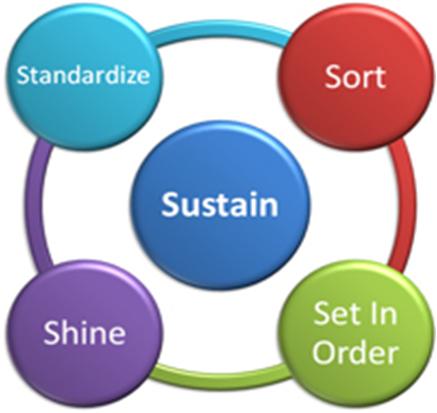Implementing a Lean Laboratory
With the rapid growth of research specimen data and the need of data sharing across regional research teams, timely, traceable and accurate laboratory information becomes important for researchers.
A reliable identification solution will provide much more benefits in comparison to a manual data recording systems. Benefits include reduced human errors, increased workplace efficiency, ability to store more information into a barcode label and an accurate specimen tracking process from receipt to disposal.
Brady is trusted for reliable, first-rate solutions for laboratory identification and specimen tracking. Our laboratory identification solution includes lab-specific label printers, labeling materials, supporting designing software systems and data collection tools.
Implementing a Lean Laboratory
Lean is a set of techniques used to manage a work environment by eliminating waste, organizing the workplace, streamlining procedures and establishing clear, visual standards. In a laboratory, lean initiatives focus on improving safety, eliminating wasted motion, space and supplies, reducing errors, and automating the specimen handling process.
1. Work Cell Specimen Processing (WCSP)
One of the most useful lean lab strategies is work cell specimen processing (WCSP)—the physical or logical layout of all testing and processing equipment, technicians, and materials through which a specimen flows. Work cells minimize movement, reduce batch sizes, decrease set up time, improve lab safety and standardize work processes to reduce errors. Clear and concise idenitification aids oftens plays an essential role in such processes, ensuring the right specimen are used each time.
2. Remove the Waste
Eliminating any activity that does not add value to a given process helps maintain a lean lab. Below are some suggestions to reduce common waste in your laboratory
TYPE OF WASTE
|
EXAMPLE OF WASTE
|
HOW TO REDUCE
|
Transportation
|
Technician walks around the lab with
specimens
in order to get to the next step
|
Optimize the placement of lab equipment to minimize
the distance that samples must travel when processed
|
Inventory
| Excess inventory of a consumable item
|
Standardize consumable types and order “Just In Time”
(JIT)
|
Motion
| Technician leaves work area to find
missing supplies
|
Keep frequently used items and materials close at hand
and well organized for easy retrieval
|
Waiting
| Peak demand and specimens waiting to
arrive for processing
|
Implement a flexible staffing model with cross functional
training
|
Over Production
|
Numerous specimen are batch processed
at one time, creating a backlog of
specimens too large for the technician to
handle
|
Implement single piece flow systems that are
immediately recognized by LIS; this enables the
specimens to quickly flow directly to the next step
without waiting
|
Over
Processing
|
Extra paperwork; tracking down
information which increases turnaround time
|
Implement standard work protocols and chain of
custody tracking
|
Defective
Product
| Data error due to handwriting
|
Simplify data entry and data management with bar
coding and automated systems that connect to LIS
|
3. Optimize Productivity with 5S
The 5S approach emphasizes the importance of maintaining an orderly workplace and using visual cues to reduce the amount of wasted time that is spent searching, looking, waiting and asking, optimizing productivity for your laboratory.

Below are some simple ways you can apply the 5S principles to your lab:
- Sort: Sort through all of the items in a given location, marking all unnecessary items with a red tag or sticker. Move the red tagged items into a temporary holding area where management can determine how to dispose of them.
- Set in Order: Determine the best location for the remaining items. Set inventory limits and re-order triggers.
- Shine: Clean your entire laboratory to eliminate the sources of contamination. Use cleaning as a forum of inspection to detect equipment abnormalities and impeding failures before they occur.
- Standardize: Create guidelines and procedures for maintaining the first three S’s. Use visual controls like check sheets and schedules to provide daily, monthly or quarterly instructions on how to maintain order.
- Sustain: Regularly communicate and train employees to maintain the laboratory’s adherence to the 5S standards.
Go Back
